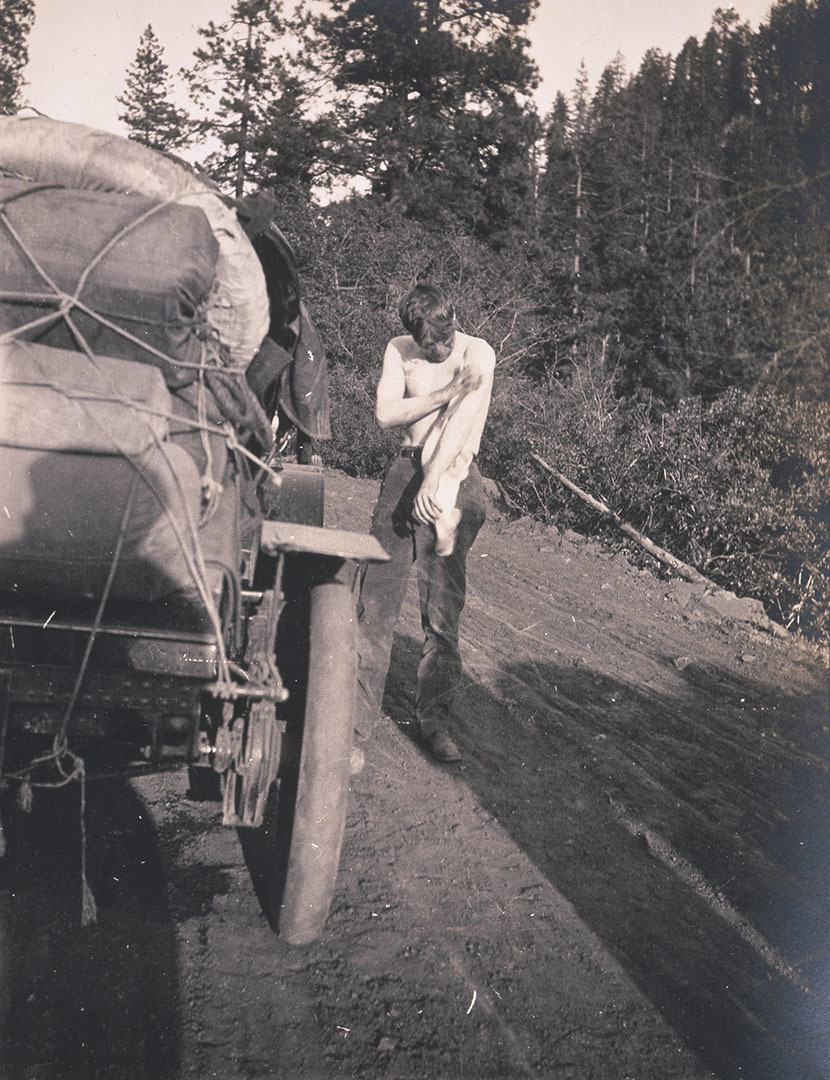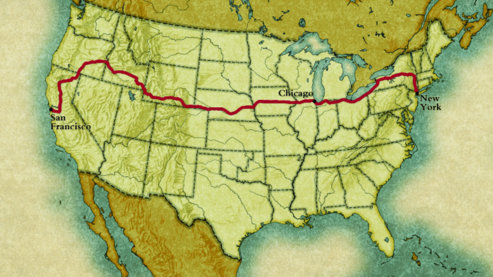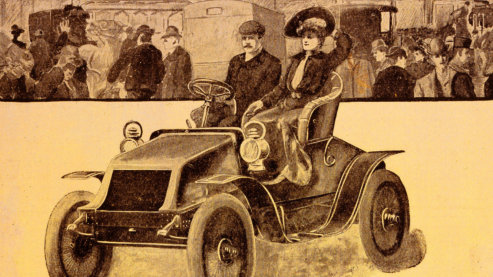The Crew
Dr. Horatio Nelson Jackson

A minister's son, born in 1872, Horatio Nelson Jackson earned his medical degree at the University of Vermont in 1893 and practiced for a few years in the towns of Brattleboro and Burlington. Then, in 1899, he married Bertha Richardson Wells, the daughter of one of the richest men in Vermont, the founder of Payne's Celery Compound, a popular cure-all that was twenty percent grain alcohol. It was her money that allowed the newlyweds to make an extended tour of Europe, buy Providence Island in Lake Champlain for a summer residence, invest in mining opportunities, purchase race horses and then automobiles — all despite Jackson's having given up his medical practice in 1900 after a mild case of tuberculosis. And it would be her money financing his improbable journey across the nation.
After the trip, Jackson became a successful Burlington businessman -- newspaper publisher, owner of the town's first radio station, president of a bank. Already in his mid-40s when World War I broke out, he insisted on enlisting in the Army despite his age , and even arranged a personal meeting with an aging Theodore Roosevelt to seek the ex-president's intercession on his behalf. At war's end, he returned from overseas a decorated hero, having received the Distinguished Service Cross as well as France's Croix de Guerre. Back in the United States, he helped found the American Legion and later ran unsuccessfully for governor of Vermont.
In 1944, to preserve his moment in history, Jackson donated his car (as well as his scrapbook of newspaper clippings and Bud's goggles) to the Smithsonian Institution in Washington D.C. And for the rest of his life he never tired of telling anyone who would listen, the story of his great adventure crossing the continent with Sewall Crocker and the bulldog, Bud, in a 1903 Winton called the Vermont.
Horatio Nelson Jackson died on January 14, 1955, at the age of 82.
Sewall K. Crocker

Sewall K. Crocker, a 22-year-old former professional bicycle racer from Tacoma, Washington, was working in California as a mechanic in a gasoline-engine factory when Jackson hired him as mechanic and co-driver for his cross-country trek. He may have already been giving Jackson and his wife private driving lessons on the two automobiles they had purchased and already shipped back to Vermont.
Crocker stayed in New York after the cross-country journey, negotiating with a newspaper to sponsor him on a six-month automobile expedition around the world. That trip never took place, but he did eventually make a two-year tour of Europe, before being called back to look after some family property in Mexico during that country's revolution. Crocker suffered a nervous breakdown from the strain, took ill, and died in his hometown of Tacoma on April 22, 1913.
Bud

As early in the trip as Sacramento (and for reasons unexplained), Jackson had been looking for a small dog to accompany him on his attempt to cross the continent. In Idaho, he finally got his chance -- thanks to the kind of misadventure that had now become almost routine. They had pulled out of Caldwell early on the morning of June 12, but after driving a few miles Jackson realized he had left his coat at the hotel. "On our way back," he wrote Bertha, "we were stopped by a man and asked if I didn't want a dog for a mascot. As I had been trying to steal one we were glad to get him so accepted the present (consideration $15.00). So Bud is now with us."
Bud was a young, light-colored bulldog, and whatever the rationale for adding this third member to the expedition, he almost immediately began attracting as much attention as the Vermont. Some newspapers would report that Jackson had rescued Bud from a savage dog fight; others wrote that he was a lonesome stray who had chased after the car for two miles before being taken on board.
"Bud soon became an enthusiast for motoring," Jackson bragged, especially after his masters put a pair of their goggles on him to keep the stinging, alkali dust out of his eyes. Riding in front, Bud learned to watch the road ahead as intently as Crocker and Jackson, bracing himself for every bump and turn -- and becoming, his owner said, "the one member of [our] trio who used no profanity on the entire trip."
Bud apparently lived a full dog's life after the cross-country trip, content to guard the Jackson home in Vermont and take short automobile trips around Burlington with his master. Following Bud's death, the Jacksons always kept at least one dog in their house, although none ever became as celebrated as the begoggled-bull pup who had crossed the continent.



